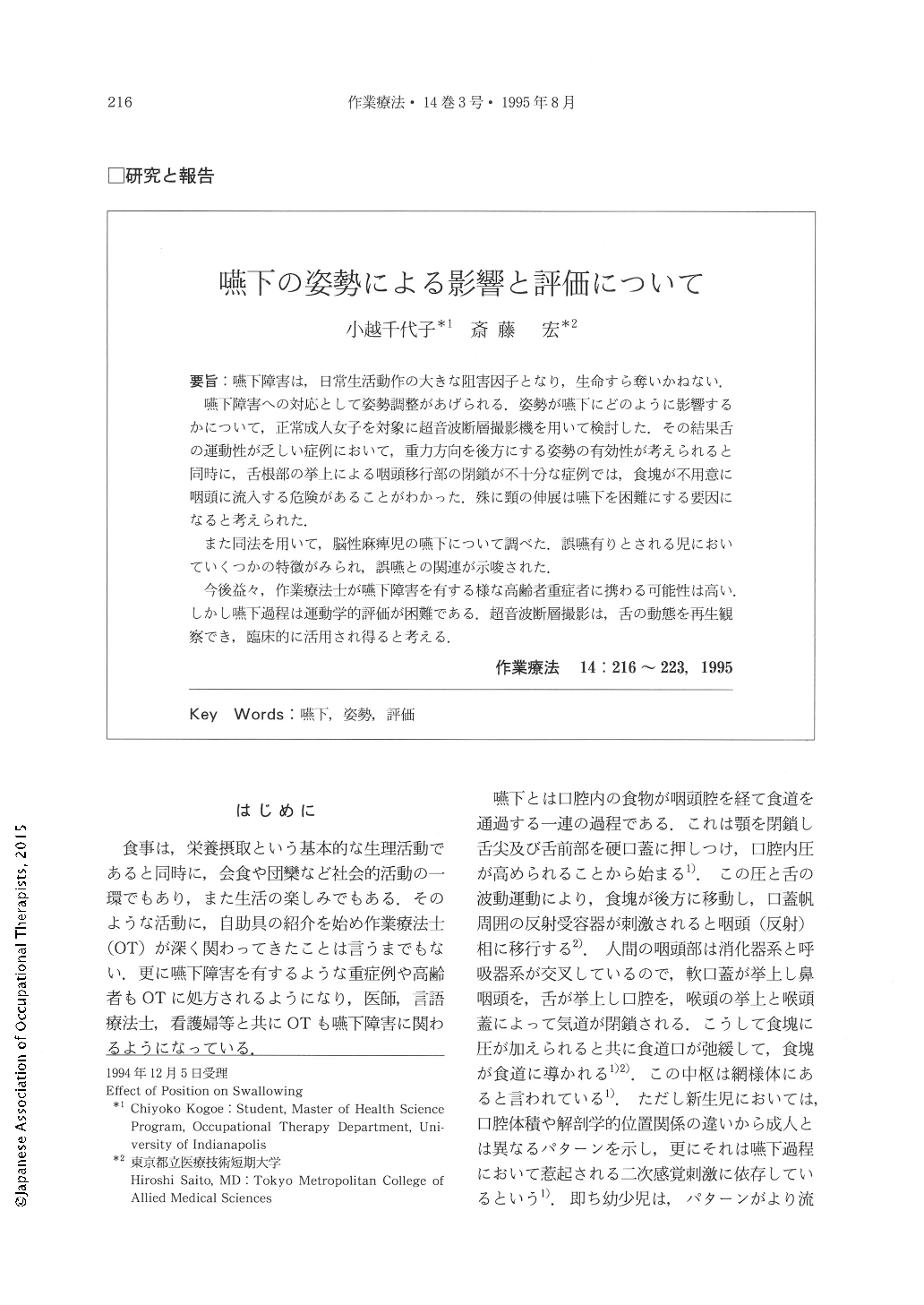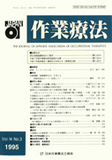Japanese
English
- 販売していません
- Abstract 文献概要
- 1ページ目 Look Inside
- 参考文献 Reference
- サイト内被引用 Cited by
要旨:嚥下障害は,日常生活動作の大きな阻害因子となり,生命すら奪いかねない.
嚥下障害への対応として姿勢調整があげられる.姿勢が嚥下にどのように影響するかについて,正常成人女子を対象に超音波断層撮影機を用いて検討した.その結果舌の運動性が乏しい症例において,重力方向を後方にする姿勢の有効性が考えられると同時に,舌根部の挙上による咽頭移行部の閉鎖が不十分な症例では,食塊が不用意に咽頭に流入する危険があることがわかった.殊に頸の伸展は嚥下を困難にする要因になると考えられた.
また同法を用いて,脳性麻痺児の嚥下について調べた.誤嚥有りとされる児においていくつかの特徴がみられ,誤嚥との関連が示唆された。
今後益々,作業療法士が嚥下障害を有する様な高齢者重症者に携わる可能性は高い.しかし嚥下過程は運動学的評価が困難である.超音波断層撮影は,舌の動態を再生観察でき,臨床的に活用され得ると考える.
Four normal adults and four cerebral palsy children (two with dysphasia, the other two without dysphasia) participated in this research as subjects.
The normal adult volunteers swallowed 15 cc water in each of 6 different positions which were combinations of neck and trunk postures. The swallowing process was observed with sonography and recorded by VHS videotape. The analyzation of the videotape showed : 1) When gravitational direction changes from the bottom of the tongue to behind, gravity helps bolus go down and the tongue movement flattened. In addition, the back of the tongue elevates earlier than usual, which seems to protect the airway from bolus falling down. 2) Extension of the neck results in pulling down the back of the tongue and in less motion of the tongue's rolling action. This is thought to be caused by the tension in the front of the neck, which may also make the hyoid bone's elevation slower.
Cerebral palsy subjects were also made to sit up straight in the wheelchairs which they use daily. A cup of water presented and each subject took in the amount of water he or she desired. The videotape of the swallowing process shows that they swallowed water several times. The length of time that hyoid bone remained in elevation varied more in the dysphasic children than in the others. In addition, the rolling action of the tongue of dysphasic children was much flatter than the others.
An occupational therapist should be aware of how positioning affects swallowing based on the increasing severity of patients referred. The positioning which should be recommended by an occupational therapist is recognized as one of the most effective approaches for dysphasia. Although picture clearness is limited, sonography is shown to be useful for tongue movement evaluation and has the advantages of being non-invasive and easy to use.

Copyright © 1995, Japanese Association of Occupational Therapists. All rights reserved.


